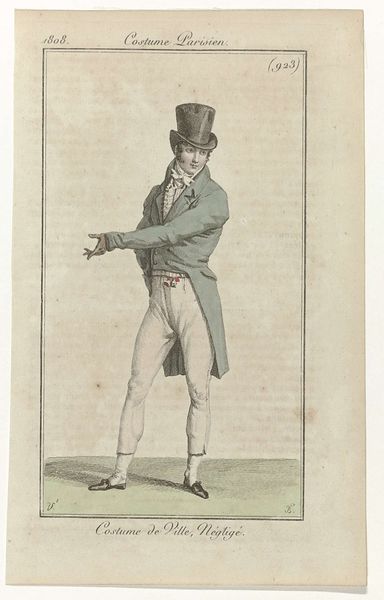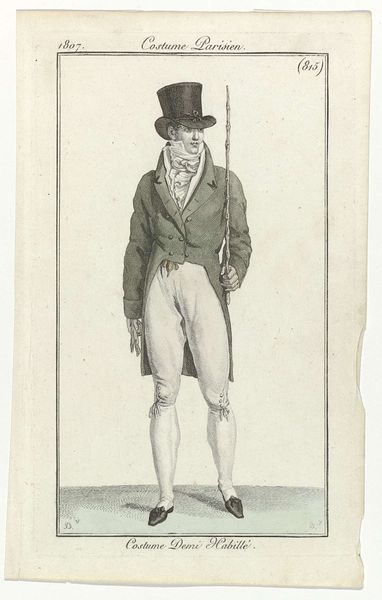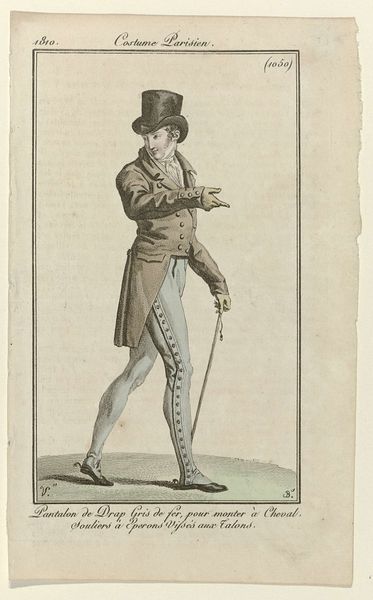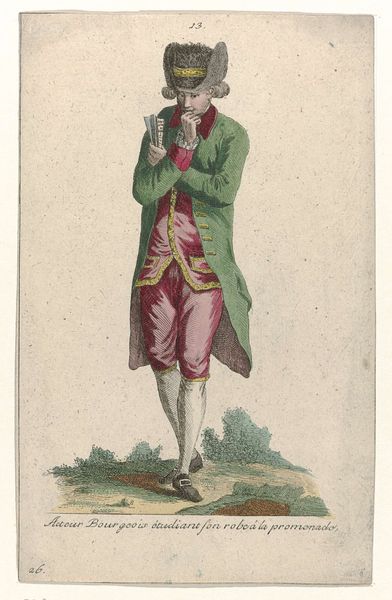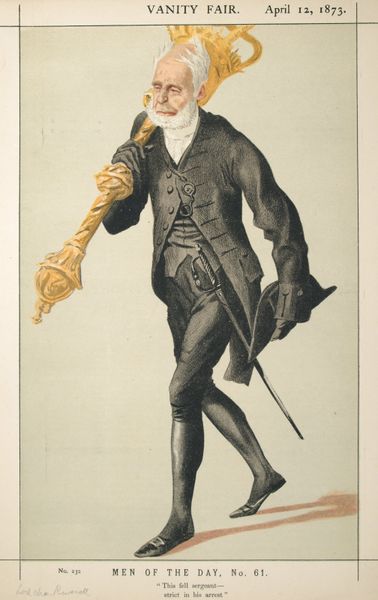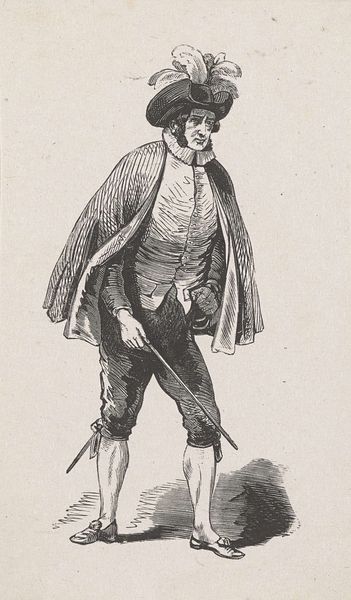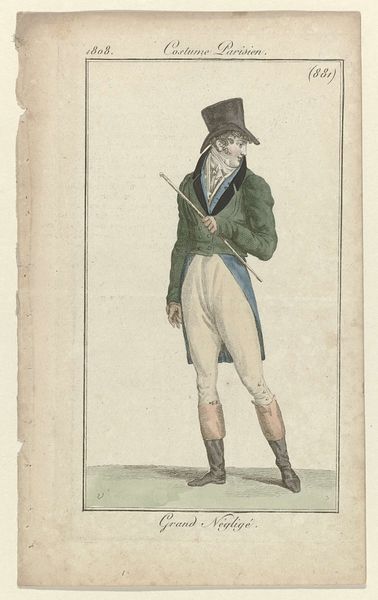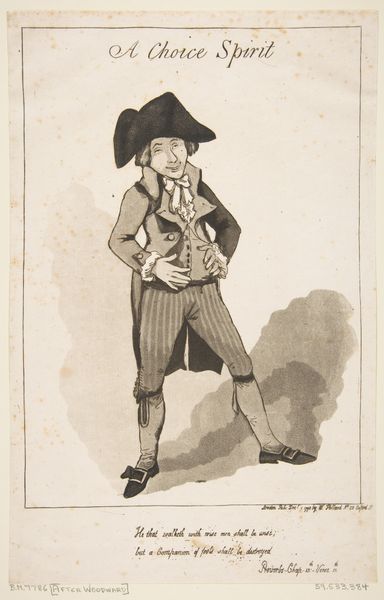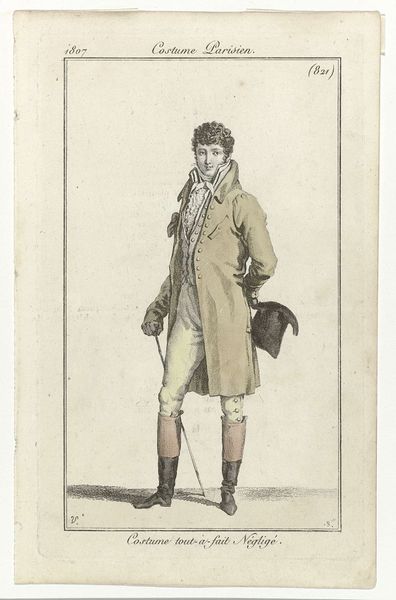
drawing, print
#
portrait
#
drawing
#
neoclacissism
# print
#
caricature
#
caricature
#
genre-painting
Dimensions: height 182 mm, width 111 mm
Copyright: Rijks Museum: Open Domain
Curator: This is a print titled "Journal des Dames et des Modes: Men’s Fashion," dating from 1803. The artist credited is Pierre Charles Baquoy, and you can find it here at the Rijksmuseum. Editor: My initial impression? Slightly satirical. The exaggerated proportions and the somewhat stiff pose of the figure hint at a commentary on the fashions of the time. Curator: It's fascinating how print media, like this very example, shaped and disseminated fashion trends in the early 19th century. "Journal des Dames et des Modes" wasn't just showing clothing; it was creating a dialogue around status and aspiration. The labour behind each individual print and it's role of democratization of visual culture cannot be ignored. Editor: Absolutely, the costume itself tells a story. The high collar, the cut of the coat, the tied breeches, everything works together to create a specific visual language. Notice how the light catches the folds of the cravat, drawing the eye. It is a game of lines, forms and shadows. Curator: I'm more interested in the societal impact and reach that Baquoy and the "Journal" had. The etching was relatively easy to reproduce compared to painting. The intended audience played a large part in defining tastes and even contributing to Paris becoming an important city in global production chains and consumer behaviours. Editor: Fair point, though I'm drawn to the visual tension. There's something inherently contradictory about rendering something as fleeting as fashion in a static, durable medium like a print. The way the artist manipulates line and form allows us to have visual communication and discourse about status in 19th-century French society. Curator: In essence, this work encapsulates how visual culture was commodified, distributed, and consumed during the rise of industrial capitalism. Even his pose is communicating to those seeing it for a possible market for the costume. Editor: Indeed, this print cleverly freezes a specific moment in time, prompting us to examine the codes of elegance and satire through a purely visual frame. Curator: So much can be unearthed by digging deep into the labour practices surrounding "Costume Parisien" – it definitely makes this etching one worth our attention. Editor: Precisely. It's the intersection of meticulous detail and visual rhetoric that makes this work so compelling.
Comments
rijksmuseum about 2 years ago
⋮
The Journal des Dames et des Modes occasionally provided coverage of men’s styles. These illustrations give a good picture of trends in mens’ clothing from 1797 to 1825. During the 18th century, gentlemen wore culotte (knee-breeches) 1. These fell out of fashion with the elimination of strict class distinctions during the French Revolution, to be replaced by a type of long trouser(s) known as pantalon à la Hussarde 2. These were worn with hussar boots. ‘Pantaloons’ 3 were trousers pulled tight with an elastic strap under the instep. Carrick 4 coats with a double collar were popular, and in the evenings men wore a special dress cloak 5.
Join the conversation
Join millions of artists and users on Artera today and experience the ultimate creative platform.
